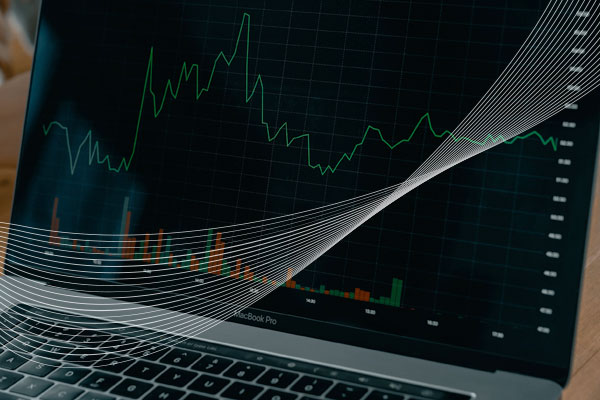Ad Selling = B2B Selling (Part 1)
By Zilliant
Jun 21, 2023
Table of Contents
The direction of the media and advertising industry is completely in the hands of consumers. At first glance, this may make the industry’s commercial challenges seem unique. However, there is plenty that media companies and ad agencies have in common with the broader B2B world, which has also been disrupted by customer-centricity. At the end of the day, ad sales are B2B sales. Read on to discover why it’s time for media companies to learn from the pricing and sales innovations that B2B manufacturers and distributors have adopted in recent years.
Ad Sales = B2B Sales
The questions faced by media companies and ad sellers in the era of the consumer mirror those of companies selling widgets, gadgets, and big machines. The products and services look different, but the central challenge is the same. The balance of power has shifted to the end customer. This is because customers have more choices than ever before, be it the way they consume media or use marketplaces like Amazon to source affordable, rapidly delivered office supplies.
By necessity, traditional distributors in many cases have responded to these threats by digitally transforming and investing in more dynamic commercial tools. As have the manufacturers upstream that are formulating the printer ink and assembling the routers and switches that end up in a corporate office. You can take this one example of disruption and transformation in the office supplies space and apply it to just about any business-to-business transaction model. Media and advertising has arguably been disrupted more than any other industry this century, yet the necessary digital transformations pertaining to ad sales have not followed suit.
Here are ways the media industry can answer the same questions those distributors and manufacturers are facing to become more dynamic through science and stronger management tools.
How do we escape year-over-year CPM tunnel vision?
The center of negotiation between the media platform and ad agency is the CPM or cost per “mille,” which means cost per thousand impressions. Negotiations are generally based on the prior year’s CPM, plus an increase. Mille can help determine the appropriate increase factoring in changes in mix the agency wants to pursue to maximize reach while getting as good of a deal as possible for its clients.
The way it’s always been done: There's a budget that the media company writes across media platforms and there's an expected CPM increase or decrease that applies based on budget and each client’s impressions objectives. They will start with a goal – “we need to generate x billion dollars from ad sales this year” – and work backward from there. This is done by trying to build up the rate card and customer pricing based on that objective and what was purchased the prior year. For example, a consumer goods company might get a 30-40% discount because that's the bucket they were in last year, even though they're committing a sizable chunk of inventory at a lower rate. On the flip side, a movie company may pay a 10% premium and it's justified based on the level of service that they require. But that's the extent of the analysis that goes into it.
Why it must change: Putting so much emphasis on what was done the year prior creates tunnel vision. It leaves out the impact of changes across the wider market and audience behavior and assumes that what made sense last year will more or less be sufficient this year. It can be an easy trap to fall into, because even if a totally different mix may make sense for an ad buyer, it’s difficult to estimate the revenue impact, given the legacy tools media companies have at their disposal. Thus, there’s a lot of pressure to just keep things similar to what they were last year.
Meanwhile, last year’s CPM was built using the same tunnel vision – in some cases custom discounts may go all the way back to the 1950s - so rates tend to erode and become increasingly less optimal over time.
The solution: Ad sellers need an infusion of market and price intelligence to capture the full revenue potential that exists. A traditionally cost-plus-based distributor gets stuck between a rock and a hard place as cost inputs rise but customer willingness to pay reaches a natural ceiling. Distributors have found that the ability to measure price elasticity and make surgical price changes quickly frees them from the cost-plus model. Similarly, these tactics when applied to ad sales can both boost CPM and give sellers clear justification of what’s behind the increase.
Ad sellers need guidance that allows them to have productive conversations with agencies, per DataPrime Chief Analytics Officer Jon Higbie: “If you could support them with tools that tell them that, ‘Yes, the proposal was very different last year, but when you look at the mix of business that you want to sign from everyone else, it's going to make you more money to sell this proposal that's got different programming that works better for that client.’”
B2B companies who take advantage of price optimization and management solutions can scientifically measure price elasticity, pull in relevant market/competitive data, and rapidly move prices up or down to align with a wider pricing strategy. This rate optimization approach will change the game for media companies currently locked in the year-over-year CPM cycle.
How do I make my rates customer-specific?
Perhaps the number one reason that B2B pricing is more complicated than B2C is the diverse nature of the customer base. No two customers are exactly alike; the prices they receive should reflect that variance. In practice, customer-specific pricing is time-consuming and prone to misalignment and inaccuracy when done manually. Media companies are not immune to this problem.
The way it’s always been done: While customer analysis has gotten better over the years, in general the thinking remains overly broad. A media platform may have a dollar figure it needs to deliver at the network upfronts that gets boiled down to, “What is the increase I need to get across all of my business to meet that budget dollar?” Maybe they determine that’s 2%. It’s a valuable piece of the puzzle, but it lacks granularity into how it will be spread across the customer base and doesn’t consider the aforementioned potential in the marketplace. Rates are also generally calculated and updated using spreadsheets and other manual means.
Why it must change: As audiences continue to fragment, media consumption channels proliferate, and macro-economic turbulence abounds, it’s never been more important to deliver the right rates to each customer that reflects their unique characteristics and the value they bring to your organization. Back-of-the-napkin math done by sales reps working off their gut must be reined in to prevent over- and under-pricing.
The solution: Our B2B customers have seen tremendous success with a centralized platform-based pricing system of record. This allows them to consider all available data (internal, external, historical, dynamic) when setting customer-specific prices. Media companies need this foundation in order to take advantage of rate optimization at the customer level. They can leverage Zilliant Price IQ® and Price Manager™ to determine the right price for each specific customer that will meet buyer expectations while optimizing their own revenue.



